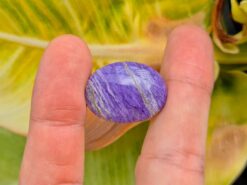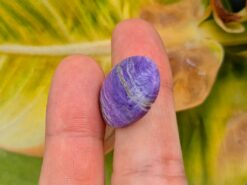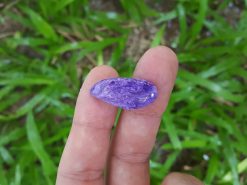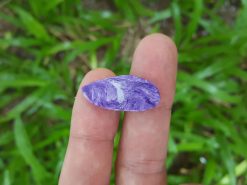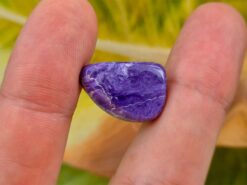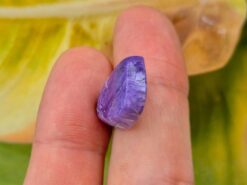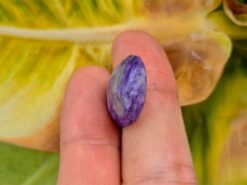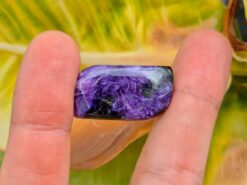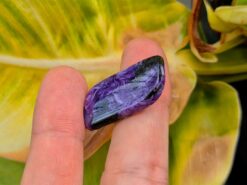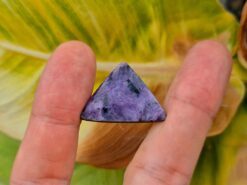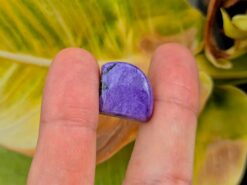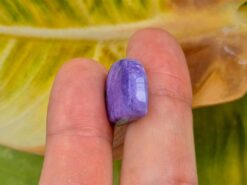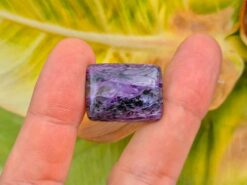Charoite
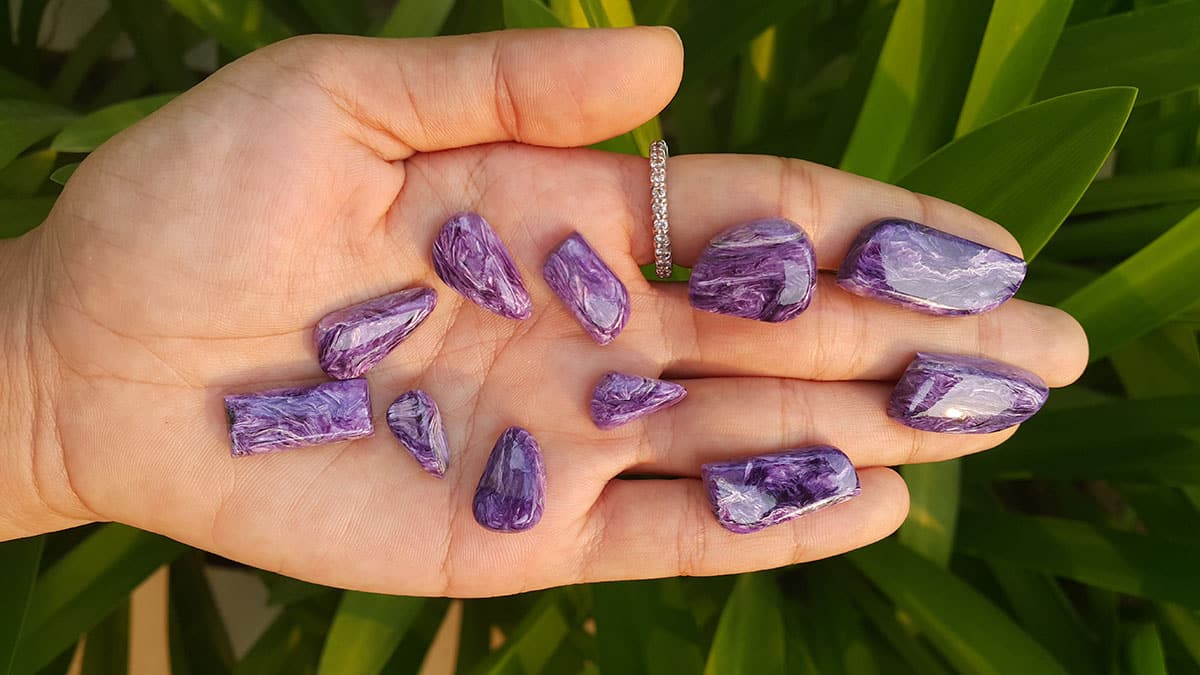
Charoite crystal stone meaning and healing properties
Buy natural charoite in our shop
Charoite stone
A rare silicate mineral, first described in 1978 and named for the Chara River. It has been reported only from the Sakha Republic, Siberia, Russia. It is found where a syenite of the Murunskii Massif has intruded into and altered limestone deposits producing a potassium feldspar metasomatite.
The stone is translucent lavender to purple in color with a pearly luster. Charoite is strictly massive in nature, and fractures are conchoidal. It has an unusual swirling, fibrous appearance, sometimes chatoyant, and that, along with its intense color, can lead many to believe at first that it is synthetic or enhanced artificially.
Charoite properties and origins
The origin of its name comes from the name of the Chara River in Siberia: it was discovered in the 1940s but will only be described by the Russian mineralogist, Rogova & al, in 1978. The Chara River is a tributary of the Oliomka, tributary of the Lena, Massif of the Aldan, Republic of Sakha.
However, traces of shamanic traditions have been found among the peasants of the Urals, traces reminiscent of the cults rendered to Bacchus by the Greeks. It symbolizes the spiritualization of the man freed from the constraints of the flesh.
It is in Russia that we find the most beautiful specimens it seems. Collectors particularly like it because the rough stones are very beautiful.
Though reportedly discovered in the 1940s, it was not known to most of the world until its description in 1978. It is said to be opaque and unattractive when found in the field; a fact that may have contributed to its late recognition.
The crystal occurs in association with tinaksite and canasite.
Density: 2.54 – 2.58. Hardness: 5.5 to 6.
Deposits: relatively rare stone and located only in Siberia (Russia)
Crystalline System: Prismatic Monoclinic (Triclinic)
Charoite meaning and healing properties
The following section is pseudo scientific and based on cultural beliefs.
A stone of transformation. It cleanses the aura and chakras by transmuting negative energy into healing benefits. It opens our hearts and stimulates unconditional love. The stone treats the eyes, heart, liver and pancreas as well as healing general conditions of the nervous system.
It stimulates the crown and heart chakras, synthesizing their energies to clear the aura and bring spiritual healing to the physical and emotional body.
Charoite under microscope
FAQ
What is charoite used for?
The gem stimulates and regulates the blood pressure and pulse rate. Improves sleep, overcomes insomnia and allays nightmares. The stone treats the eyes, heart, liver and pancreas as well as healing general conditions of the nervous system.
Is charoite expensive?
Charoite value: Despite its rareness, The crystal is not a very expensive gemstone and often use in jewellery as raw beads bracelet or cabochon pendant. A single carat will not run you more than a few dollars.
What is the difference between sugilite and charoite?
Both stones have a similar violate to purple color scheme. However, sugilite lacks the distinctive twisting patterns that are present in must gemstones. Sugilite also doesn’t have the slight to moderate chatoyancy that’s common in a lot of stones.
How can you tell if charoite is real?
Real stone is mottled, with an iridescent sheen to its banding. There is often patches of green and black, in the form of aegirine. There may also be orange tinaksite present.
Where is charoite found?
The only source for this striking gemstone remains the Chara River area in the Murun Massif, Northwest Aldan, Sakha Republic, Russia. The crystal forms from limestone due to the process of contact metamorphism.
What color is charoite?
The gem is opaque or translucent lavender to purple in color with a pearly luster.
Natural charoite for sale in our gem shop
We make custom made charoite jewelry as engagement rings, necklaces, stud earrings, bracelets, pendants… Please contact us for a quote.

